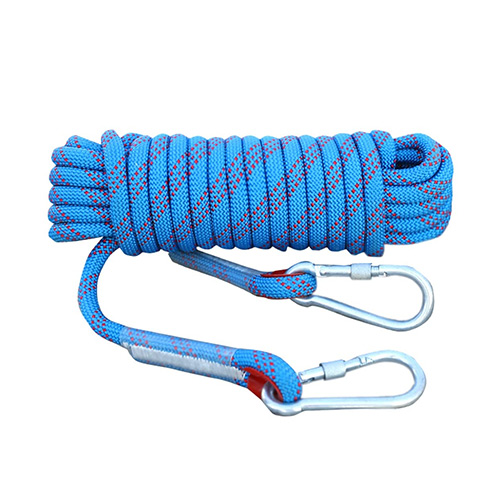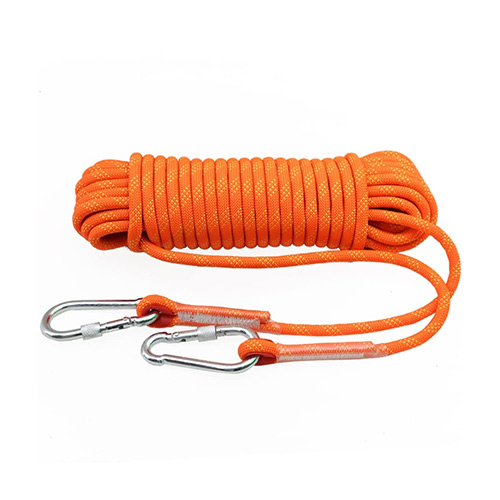Specifications:
- Material: Typically made from durable synthetic fibers like nylon, polyester, or aramid, which offer excellent strength and abrasion resistance.
- Diameter: Usually ranges from 8mm to 13mm, depending on the specific application and required strength.
- Length: Available in various lengths, often from 30 meters to 100 meters, to suit different rescue scenarios.
- Breaking Strength: High tensile strength, often exceeding 20 kN (kilonewtons) to ensure safety and reliability.
- Construction: Kernmantle (core and sheath) construction for optimal strength, durability, and flexibility.
Features:
- High Strength: Capable of withstanding significant loads, making them suitable for heavy-duty rescue operations.
- Abrasion Resistance: Designed to resist wear and tear from rough surfaces, ensuring longevity and reliability.
- Low Stretch: Minimal elongation under load to provide better control and stability during rescues.
- UV Resistance: Treated to resist damage from ultraviolet (UV) rays, enhancing durability in outdoor environments.
- Water Resistance: Often treated to repel water, maintaining performance even in wet conditions.
Applications:
- Rappelling: Used by rescue teams and climbers to descend safely from heights.
- Climbing: Essential for ascending difficult terrain during rescue operations or recreational climbing.
- Securing Loads: Useful for securing and moving heavy equipment or individuals in emergency situations.
- Swiftwater Rescue: Employed in water rescues to secure and pull individuals to safety.
Advantages:
- Durability: Built to withstand harsh conditions and repeated use without significant wear.
- Versatility: Suitable for a wide range of rescue and emergency applications.
- Safety: High strength and low stretch properties enhance safety during critical operations.
- Portability: Lightweight and easy to carry, making them convenient for rescue teams on the move.







